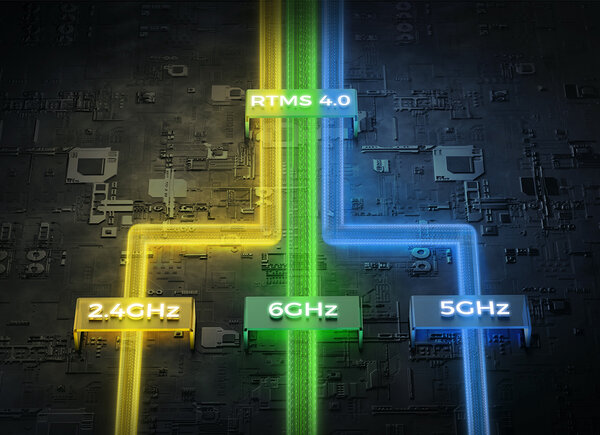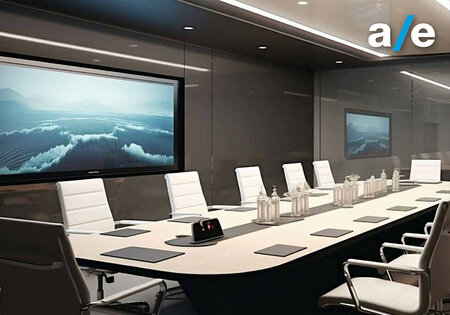Wireless video transmitters and receivers have revolutionized audiovisual production. Thanks to advanced technologies designed to overcome the challenges of radiofrequency, particularly interference, these compact devices allow high-quality audio and video signals to be transmitted without cables, offering a range of practical benefits. In this article, we’ll explore the key features of these systems, examining the technologies involved and their real-world applications.
A wireless video transmission system (technically an audio/video system, but we’ll simply refer to it as “video” for clarity) consists of two devices: a transmitter and a receiver. These units enable the transmission of HDMI or SDI signals from a source device to a receiver at a distance, eliminating the need for physical cables. On the receiving end, displays, video projectors, video mixers, streaming systems, and more can then be connected via traditional cabling.
Beyond the obvious advantages of a cable-free setup, there’s another, often overlooked benefit: wireless video systems allow live footage to be transmitted from the camera to a remote monitor in real time. This keeps unnecessary personnel away from the operator, reducing distractions. While one could argue that a long HDMI cable would serve the same purpose, the difference lies in safety—long cables running across a set can be a serious hazard during production.
From analog to digital
In recent years, technology has made huge leaps forward. Today’s most advanced digital wireless AV systems, such as the Accsoon CineView Master 4K, pack highly sophisticated technical features into compact, lightweight designs.
The shift from analog to digital technology in the early 2000s marked a true turning point. Standards like Wi-Fi, Bluetooth, and digital RF have replaced analog systems, ushering in a new era. Today, most wireless video transmitters used in filmmaking, television production, live streaming, video conferencing, corporate presentations, gaming, and beyond rely on Wi-Fi. In the case of the CineView Master 4K, triple-band technology (2.4, 5, and 6 GHz) enhances signal stability and reduces interference. These systems also integrate other technologies, such as DFS, the RTMS 4.0 protocol, and high-performance antenna arrays.
There are also devices on the market that use proprietary wireless technologies operating on single or dual frequency bands, though they may not match the performance of multi-band systems.
Resolution, range, and latency
Video quality primarily depends on the supported resolution. The most advanced systems support 4K @ 60 fps, while other, like the Accsoon CineView SE and CineView HE, are limited to 1080p @ 60 fps. The right resolution depends on the use case: for cinema and high-end productions, 4K HDR is preferable, while 1080p is generally sufficient for broadcasting or live streaming.
Looking ahead, the industry is clearly moving toward 8K. Integration with artificial intelligence and neural networks may soon optimize signal management and further reduce interference.
Transmission range is another crucial parameter. Some professional systems can reach distances of up to 2.5 kilometers, while more budget-friendly models typically cover a few hundred meters. The actual range depends heavily on the environment, including obstacles and sources of interference. For this reason, manufacturers typically list the range under ideal line-of-sight (LoS) conditions with optimal propagation.
Latency, meanwhile, is a critical factor—it measures the delay between video capture (at the transmitter) and its display. In high-quality systems, latency can be nearly zero, allowing for virtually instant, lag-free transmission. Latency under 20–30 ms is considered excellent. Entry-level systems often exceed 100 ms, which may be tolerable for some applications but not for scenarios where perfect synchronization is essential.
UVC live streaming and multi-device connectivity
UVC Live Streaming is based on the USB Video Class protocol, which allows video to be transmitted over a USB connection without the need for additional drivers or complex setup. This makes it easy to connect to computers or streaming platforms such as OBS and YouTube. Key advantages include the elimination of video capture cards or extra software, support for resolutions up to 1080p or higher, and compatibility with major operating systems like Windows, macOS, and Linux.
Another powerful feature is the ability to simultaneously connect a wireless transmitter to multiple receivers or smart device such as smartphones, tablets, and even computers. Advanced systems like the Accsoon CineView HE enable this capability via Dual-Band or Multi-Band technology. Note that a dedicated app is required. Using a smartphone in this way adds flexibility on set—for instance, the video feed received from the transmitter can be recorded directly on the phone or streamed live, provided mobile network conditions allow.
This functionality is ideal for remote monitoring, film production, live streaming, and events where multiple team members need real-time visual access to the signal.
The technology behind wireless video systems has transformed the workflows of professionals in cinema, advertising, and television. With advancements in multi-band transmission, lower latency, and enhanced video quality, these devices are becoming increasingly powerful and accessible. Choosing the right model depends on specific production needs. For cinematic or television work, 4K systems with ultra-low latency are ideal. For live streaming, signal stability and mobile compatibility are often the top priorities.
To achieve the best possible results, it’s essential to evaluate factors like transmission range, supported frequency bands, and signal quality, while also considering practical details such as power supply options and the type of connections available.
Want to know more?
Email us at international@audioeffetti.it

 English
English  French
French






